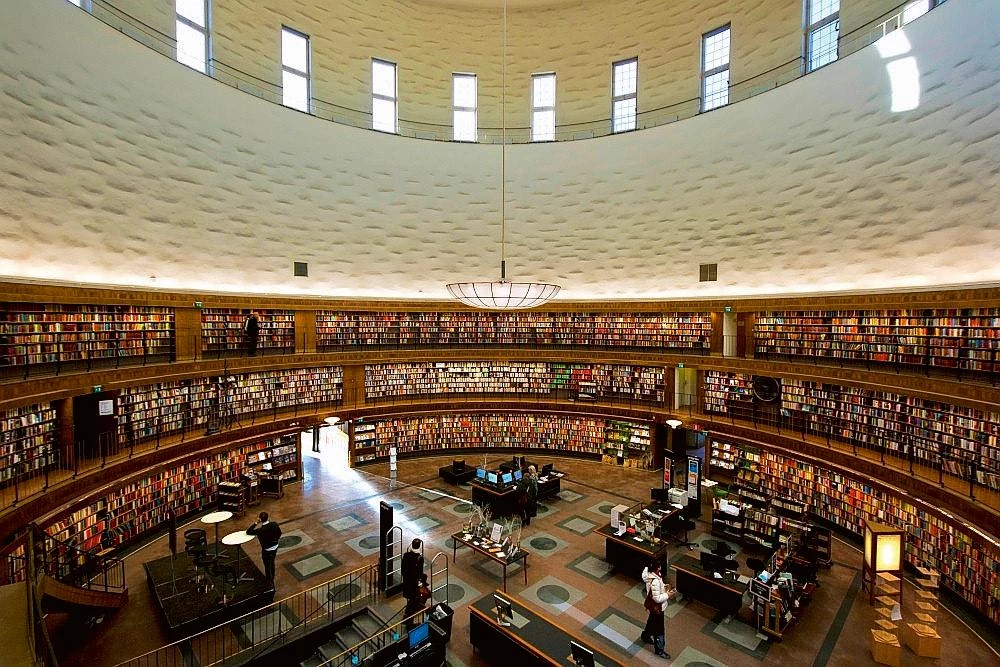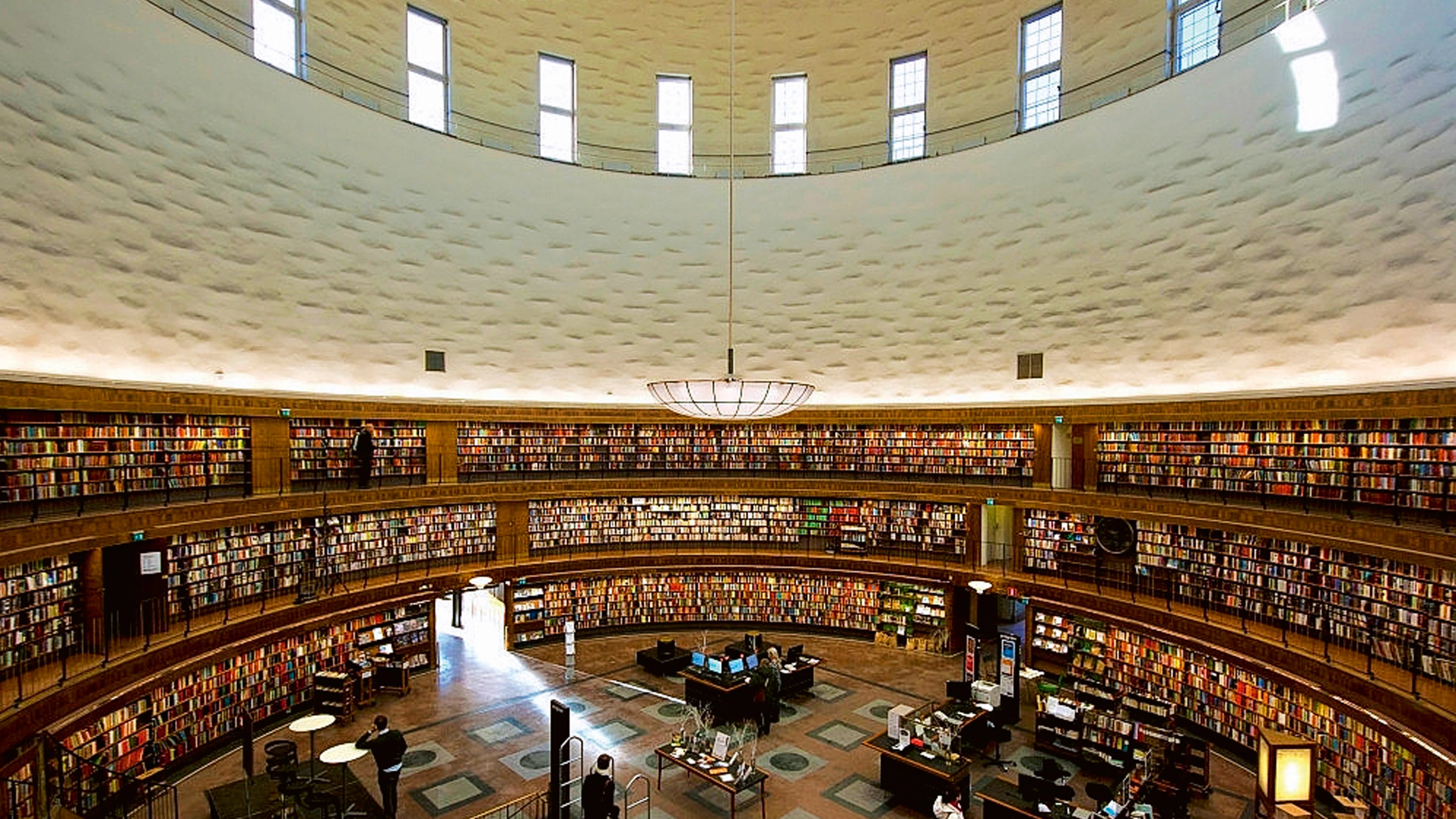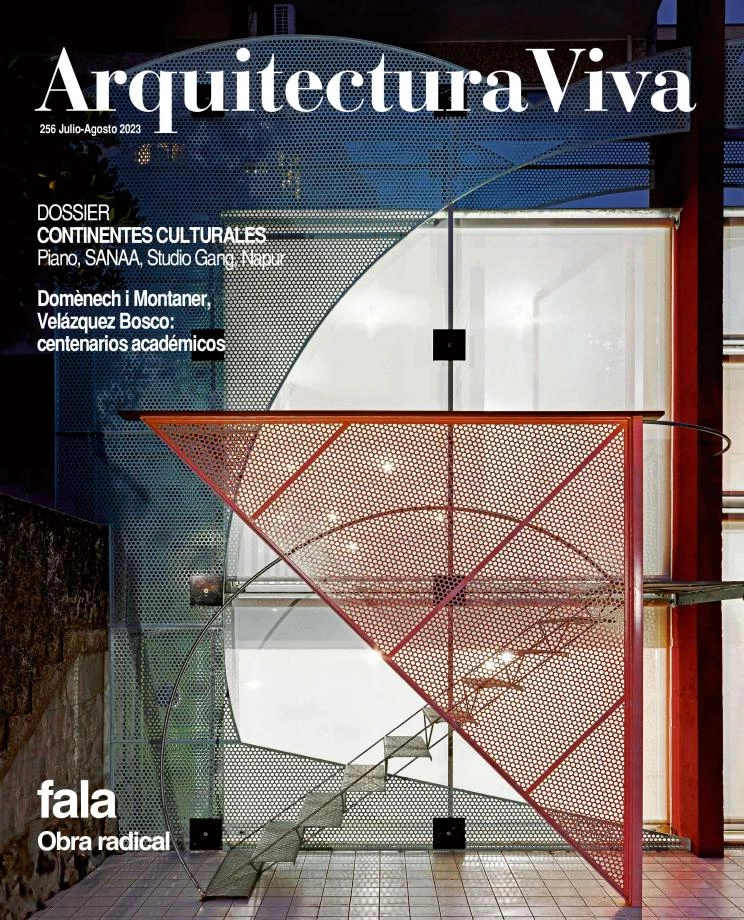
Erik Gunnar Asplund, Stockholm Public Library, Sweden, 1928
For many, this title is an oxymoron. It seems that associating modernity and beauty is as provocative as writing frozen fire or the sound of silence. To use André Bretón’s famous line, “[modern] beauty will be convulsive or will not be at all,” introducing a tremor foreign to the conservative serenity of classical beauty, which can be violent or imperfect but always respects the calm, narcotic reference of the canon. It is not easy to know ‘what do we talk about when we talk about beauty,’ as argued in the review of works by Peter Sloterdijk and Byung-Chul Han (Arquitectura Viva 230), but there is no doubt that the iconoclastic component of modernity fractured aesthetic codes and urban continuities, opening a gap between the avant-gardes and the public that the postmodern reaction later tried to close. In a sense, respect for heritage and landscape is an achievement perceived as antimodern, given that a good part of the desecration of cities and coasts is attributed to the dogmatism of modernity, a religion ignorant of context. However, the transformation of the urban and rural territory is driven by powerful economic and technical forces, and it is in this social modernity that we must ultimately find accountability for errors and successes, rather than in different aesthetic or stylistic options.
As the journalist Andrés Rubio documented, the Spain of roundabouts and swimming pools is also an ‘ugly Spain,’ but this dispersed urbanity is above all an ecologically unsustainable Spain built not only by real-estate greed but also by social demands and political will. In parallel with the many seaside aggressions and the appalling interventions on historical cores (censured repeatedly in this magazine, as the articles gathered in Territorios mutantes show), there have been significant improvements in the urban quality of city centers and peripheries, so it is not fair to make catastrophist assessments of Spain’s first democratic decades, which have seen both lights and shadows. True, these have been good times for Spanish architecture, which has earned international recognition like never before, and bad times for our urbanism, which has failed to develop efficient control mechanisms, but the origin of these mutations is not to be found in the aesthetic convulsions of modernity, which have hardly rippled the surface of the water: it lies in the strong undercurrents that drag us toward an unknown future.
Our tribulations are more urban and landscape-related than architectural, because in Spain – barring the Vox campaign against the New European Bauhaus – there is a certain consensus on the compact city, on respect for the environment, and on the modern language. It is not so in other places, proof of which is the influence that the British philosopher Roger Scruton – who defended classicist architecture, as reflected in the obituary published in Arquitectura Viva 221 – wielded over conservative politicians like Viktor Orbán in Hungary or Giorgia Meloni in Italy, not to mention Theresa May, who as Prime Minister of the United Kingdom advocated tradition through the ‘Building Better, Building Beautiful’ commission. In the United States, classical architecture is almost a Republican fief, and Donald Trump issued an executive order that future federal buildings be ‘beautiful,’ preferably designed in a classical language (see ‘Styles of State,’ Arquitectura Viva 222), which Joe Biden revoked upon taking office. But in June 2023 a bill was introduced in the Senate, named the ‘Beautifying Federal Civil Architecture Act,’ that gives preference to classical and traditional over modern architecture, on the grounds that only the former can “inspire the human spirit, uplift and beautify public spaces, and ennoble the American nation,” and pinpointing two particular styles, brutalism and deconstructivism, as those to always avoid. Oxymoronic or not, modern beauty is still a source of scandal.






